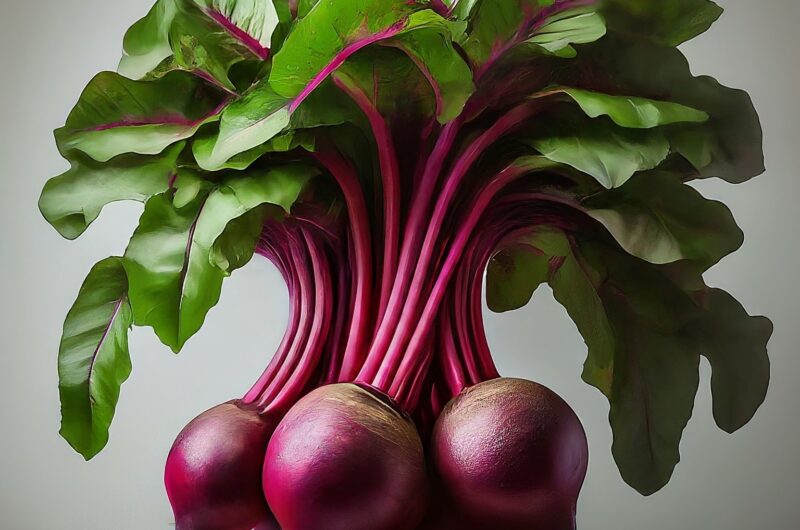Beets are a vegetable that adds a pop of color and earthy taste, to dishes. They’re not just tasty but rich in nutrients. This blog post explores ways to cook beets like boiling, roasting, sautéing and steaming. It also covers tips on preparing and storing beets along with sharing some beet recipes to try at home. Whether you’re a beet lover or new to cooking with them this guide will help you make the most of this vegetable in your kitchen.
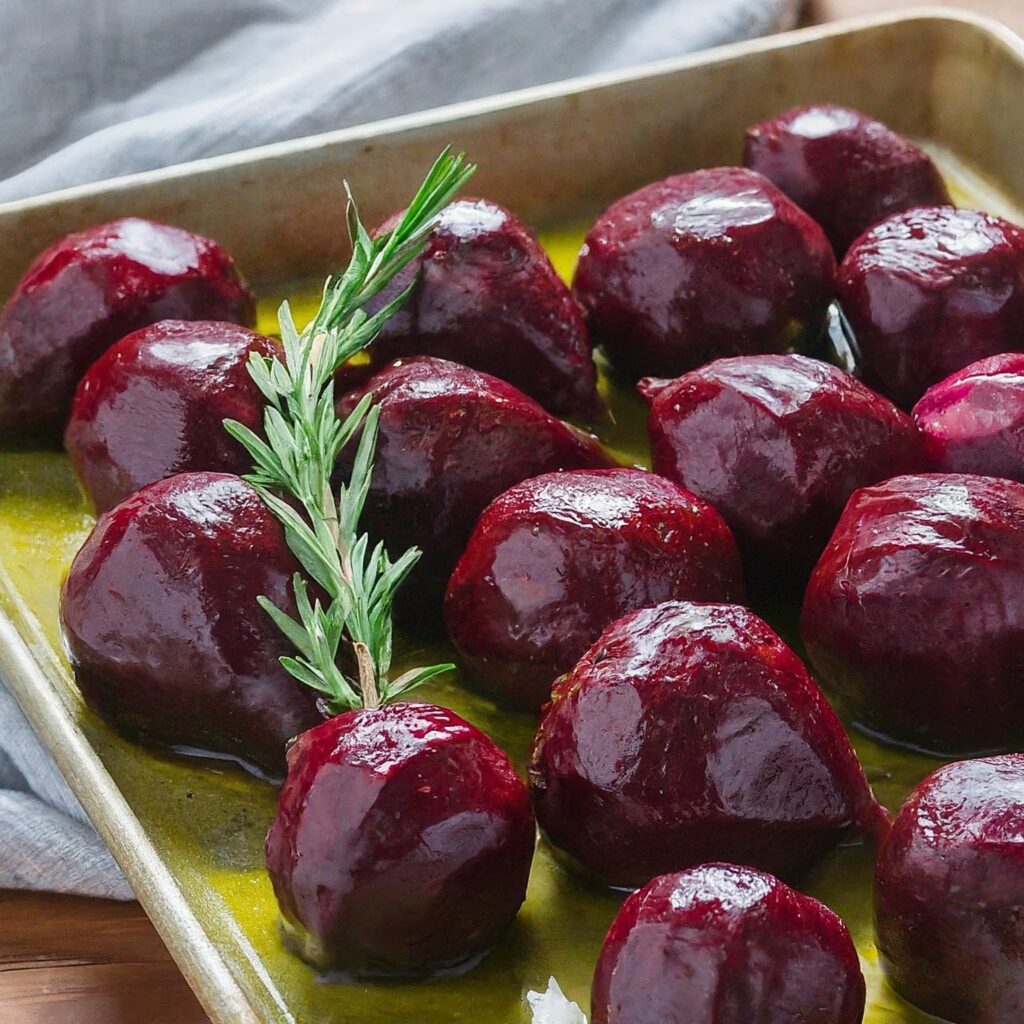
Exploring the Health Benefits and Nutritional Value of Beets
Beets stand out for their hue delightful flavor and impressive health perks. This section delves into why incorporating beets into your diet’s beneficial.
The Nutrient Rich Composition of Beets
Beets are a powerhouse brimming with vitamins, minerals and antioxidants, like folate, manganese, potassium and vitamin C. These essential nutrients contribute significantly to maintaining health and vitality.
Supports Cardiovascular HealthBeets contain nitrates that’re beneficial, for lowering blood pressure and supporting heart health. Studies indicate that incorporating beets into your diet may decrease the likelihood of heart disease and stroke. Moreover the fiber found in beets plays a role in maintaining cholesterol levels.
Enhancing Physical Performance
The nitrate content in beets is known to boost performance by converting into nitric oxide within the body enhancing blood circulation, oxygen supply and stamina during exercise. Adding beets to your workout routine could potentially provide an advantage.
Promoting Digestive Well being
Rich in fiber beets aid digestion. Help regulate bowel movements. Additionally betalains present in beets offer inflammatory and detoxification properties that support a healthy digestive system.

Improving Cognitive Abilities
The nitrates present in beets can enhance blood flow to the brain leading to improved function and reduced risk of decline associated with aging. Some research suggests that regular consumption of beets may enhance memory focus and overall brain health.
Offering Antioxidant Protection and Anti-inflammatory Effects
Beetroots are packed with antioxidants like betalains and vitamin C that safeguard cells, against damage caused by radicals.
These antioxidants also have inflammatory properties, which could help decrease inflammation and promote overall wellbeing.
Additional Health Benefits
Apart, from the advantages mentioned earlier beets are linked to health benefits like supporting liver function aiding in maintaining a healthy weight and potentially assisting in cancer prevention. While more studies are necessary these initial findings underscore the health perks of adding beets to your diet.
Now that we’ve examined the health benefits and nutritional value of beets lets proceed to the section where we’ll talk about the ways to prepare beets for cooking.
Preparing Beets for Cooking
Before delving into cooking techniques for beets it’s crucial to understand how to prepare them. In this segment we’ll discuss everything you need to know about selecting, cleaning and cutting beets for cooking.
Selecting and Purchasing Quality Beets
When choosing beets opt for those that’re firm have skin and are free of imperfections or soft spots. The beets size is a preference; small and large beets can both offer taste. If available choose beets, with greens attached as they can also be utilized in recipes.
Cleaning and Preparing the Beets
Before you start cooking it’s essential to clean the beets to get rid of any dirt or debris. Begin by rinsing them under water and gently scrubbing the skin with a vegetable brush. If the beets come with greens remove them. Keep them aside for use. You can choose to peel the beets using a vegetable peeler if you wish. Its not mandatory. The beet skin is edible. Adds a texture, to many dishes.
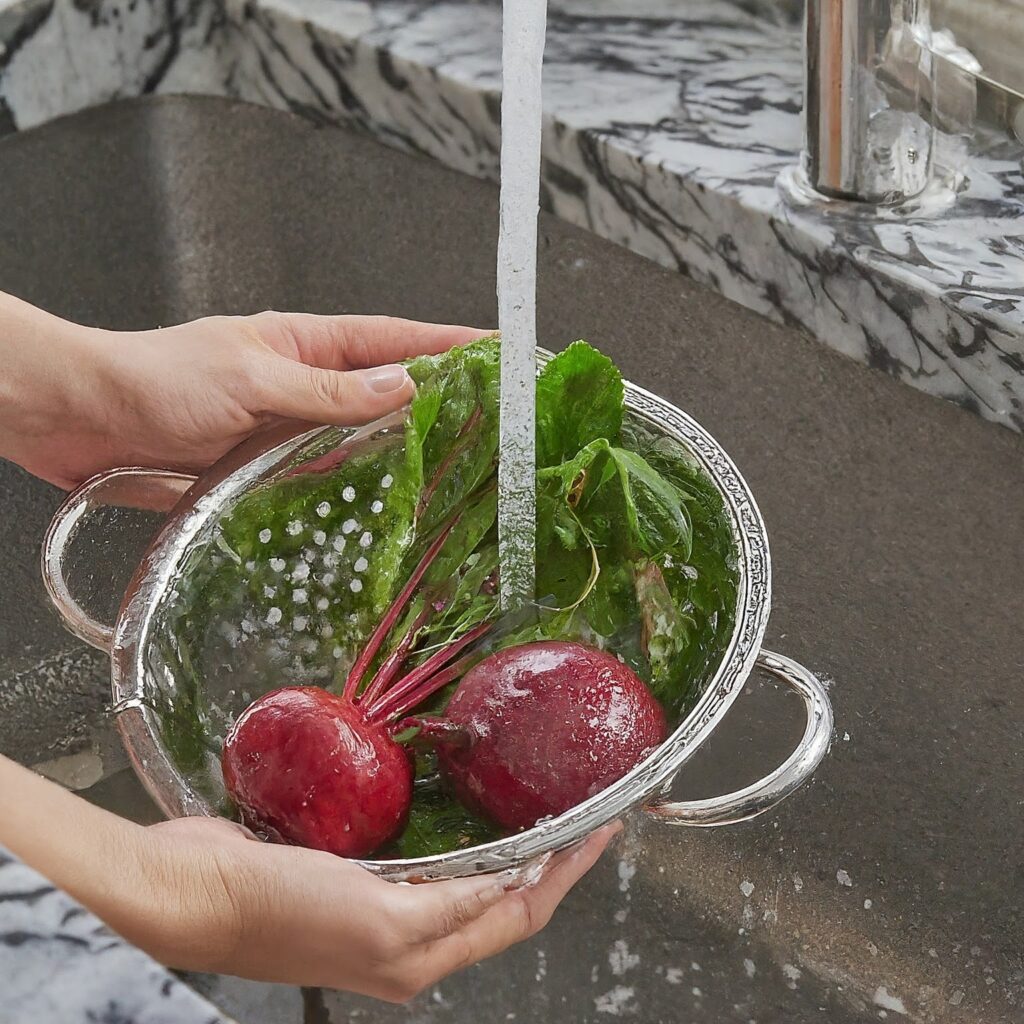
Various Methods of Cutting Beets
Beets can be sliced in ways depending on the recipe and personal preference. Here are some common cutting techniques;
Cubes; Slice the beets into cubes for uniform cooking and presentation. This works well for dishes like beets or beet salads.
Slices; Cut the beets into rounds or larger slices. This is perfect for recipes such as beet chips or layering in gratins.
Julienne; Slice the beets into strips for recipes that call for a delicate texture like stir fries or salads.
Grated; Grate the beets using a box grater or food processor for recipes, like beet slaw or fritters.
When handling beets remember to use a knife and be cautious as the vibrant color can easily stain surfaces and clothing.
Now that we’ve discussed the preparation methods lets move on to exploring ways to cook beets.

How to cook beets
4
servings39
kcalIngredients
Beets: 1 bunch (around 4-6 medium beets)
Water: Enough to cover the beets in a pot
Olive oil: 1 tablespoon (optional)
Salt: To taste
- Optional Ingredients:
Aluminum foil (for roasting)
Vinegar: 1 tablespoon (for roasting)
Brown sugar: 1 tablespoon (for roasting)
Herbs (fresh thyme, rosemary, etc.): A few sprigs (optional)
Directions
- Boiling Beets
Boiling is an effective method for cooking beets. Here’s how you can do it;
1.Place the beets in a pot and add enough water to cover them.
2.Bring the water to a boil, over heat then reduce the heat and let the beets simmer.
3.Cook until the beets are tender when pierced with a fork typically taking around 30 45 minutes depending on their size.
4.Once cooked, remove the beets from the pot. Allow them to cool slightly before peeling or cutting according to your preference.
5.Boiled beets are versatile. Can be savored alone tossed into salads or incorporated into a variety of dishes.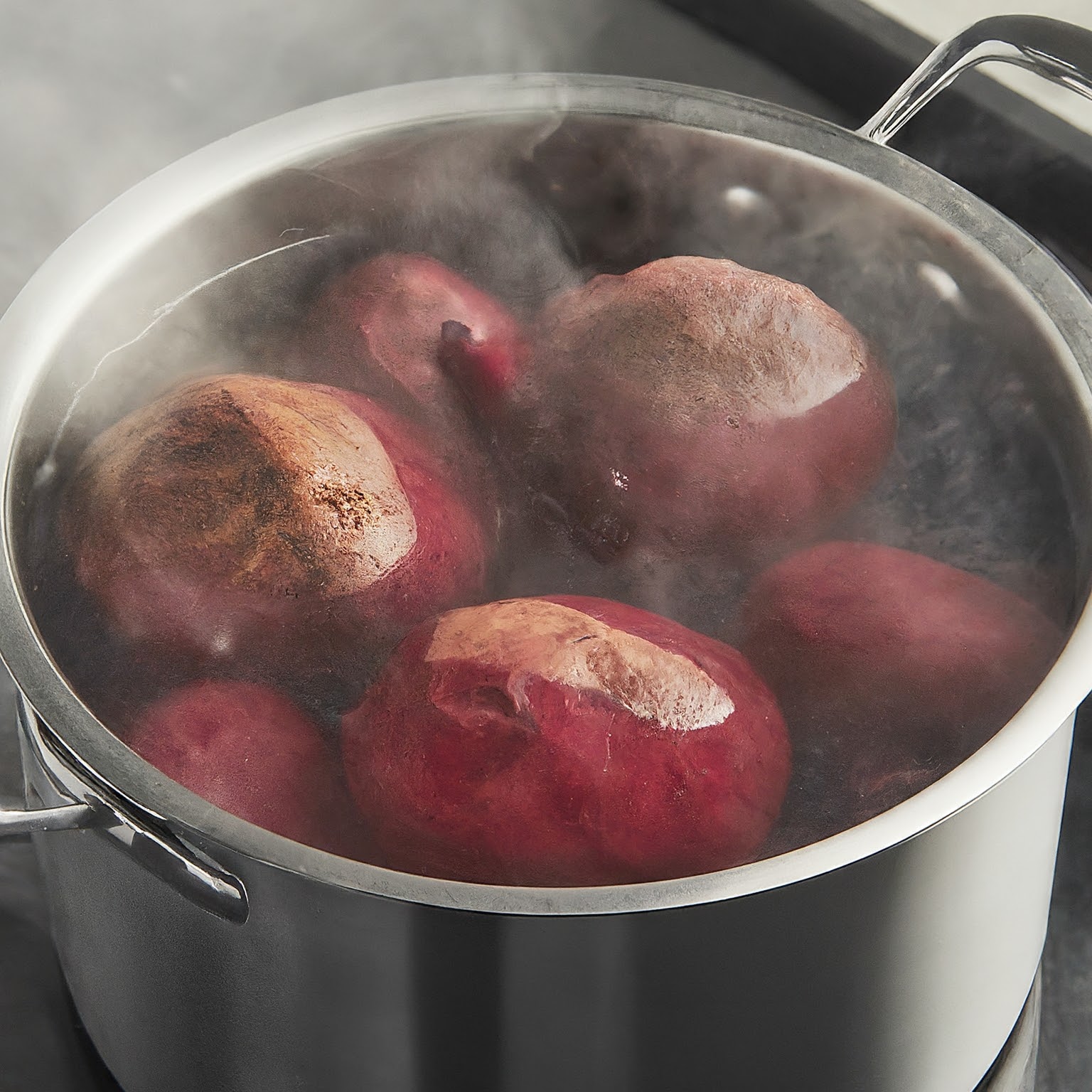
- For Roasting Beets;
Enhance the sweetness and flavor of beets by roasting them. Follow these steps;
1. Preheat the oven to 400°F (200°C).
2. Place the beets on a baking sheet. Drizzle, with olive oil, salt, pepper and optional herbs or spices.
3. Wrap each beet tightly in foil or place in a covered baking dish.
4. Roast in the preheated oven for 45 60 minutes until fork tender.
5. Allow the beets to cool before peeling or cutting them.
Roasted beets are delicious as a side dish in salads or as ingredients for recipes like beet hummus or roasted beet and goat cheese tart.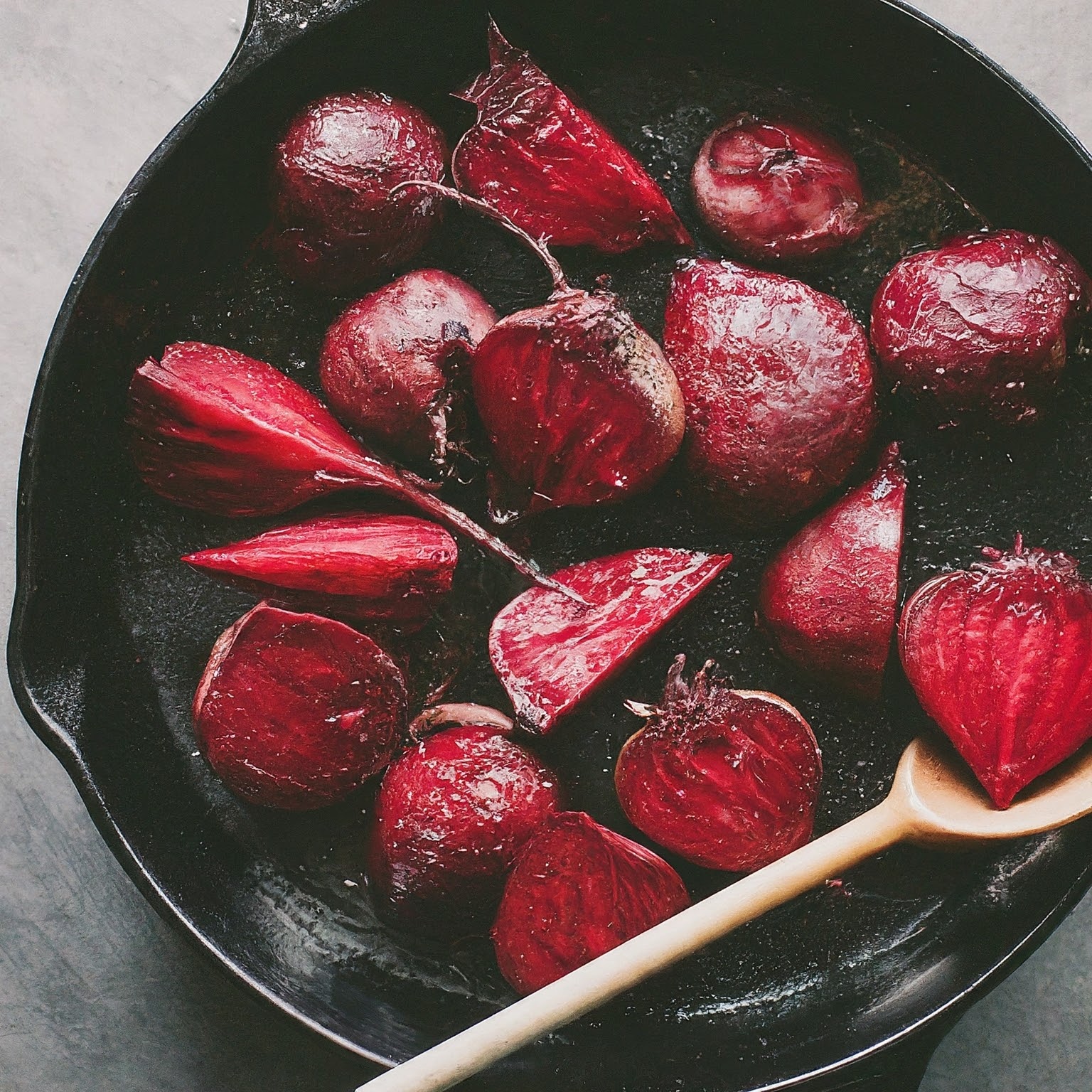
- Steaming Beets;
Steaming is a method to cook beets gently. Here’s how;
1. Fill a steamer pot with an inch of water.
2. Place prepared beets in the steamer basket, without submerging them in water.
3.Cover the pot. Heat the water until it boils gently.
4.Steam the beets for around 20 30 minutes until they can be easily pierced with a fork.
5.After steaming allow the beets to cool slightly before peeling or cutting them.
Steamed beets can be an addition to salads purees or, as a side dish option.
- Cooking Beets by Sautéing
1.Sautéing beets is an tasty way to cook them while retaining their taste and texture. Here’s how to sauté beets;
Warm a tablespoon of oil or butter in a pan over heat.
2.Add the beets to the pan. Sauté them for about 8 10 minutes stirring occasionally until they become tender.
Season the beets with salt, pepper and any preferred herbs or spices.
3.After cooking take the beets out of the pan. Serve them as a side dish or mix them into dishes.
Sautéed beets are delicious on their own in grain bowls or as toppings, for pizzas or bruschetta.
4.Now that you’ve learned ways to cook beets lets move on to explore some beet recipes you can try making at home. Exploring Tasty Beet Dishes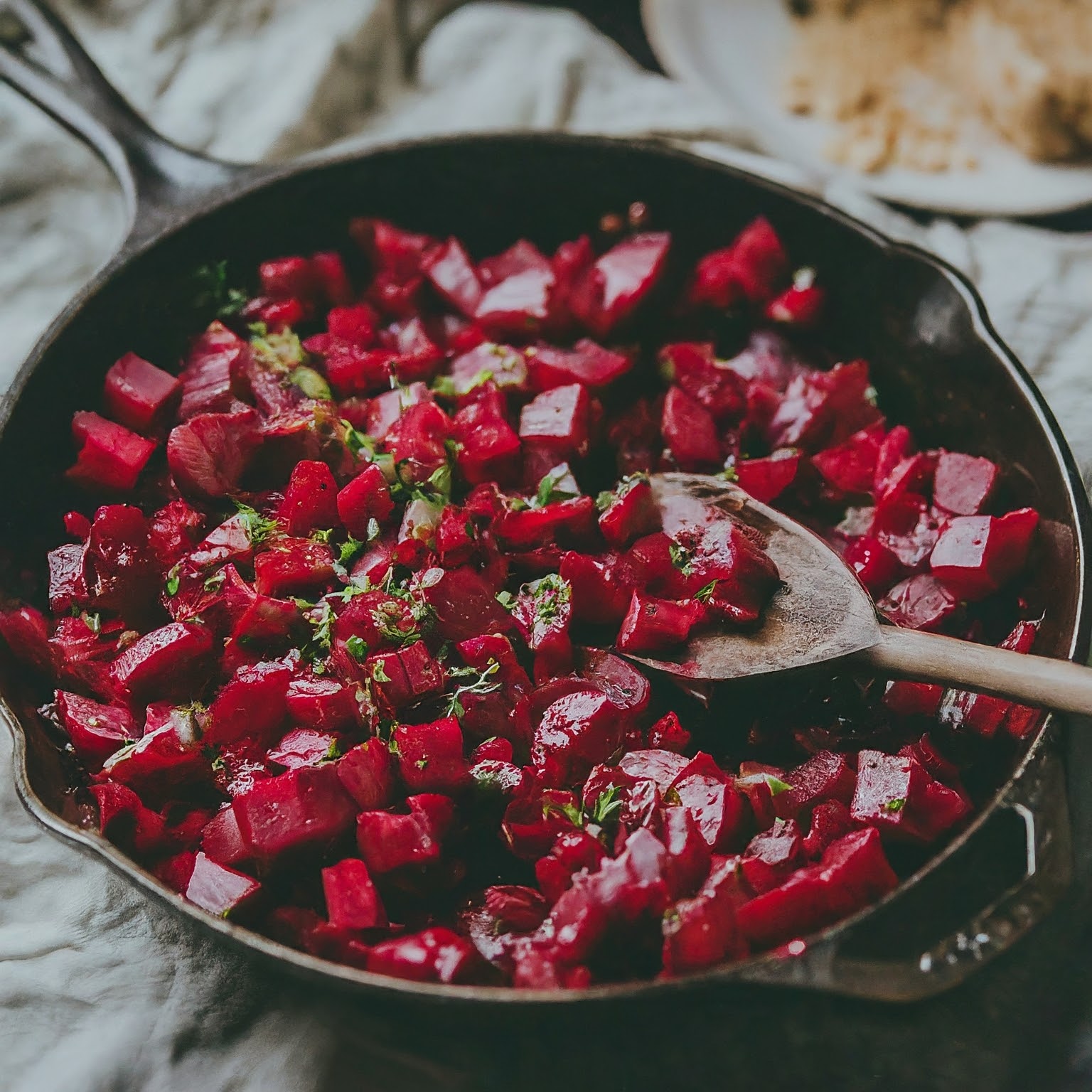
Now that you’ve learned ways to cook beets it’s time to get creative in the kitchen and try out some beet recipes. Whether you enjoy salads, soups, pickles or even desserts there are plenty of ways to add beets to your cooking repertoire. Below we’ll share a variety of beet recipes that will surely please your palate.
Beet Salad

Roasted Beet and Goat Cheese Salad; Mix beets, with greens crumbled goat cheese toasted walnuts and a balsamic vinaigrette for a flavorful salad with a mix of tastes and textures.
Citrus Salad; Pair sliced beets with orange or grapefruit segments, arugula leaves, feta cheese and a citrus dressing for an lively salad.
Beet Soup
Borscht; This classic Eastern European soup highlights beets as the ingredient. Cook beets with onions, carrots, cabbage and vegetable broth; then top it off with a dollop of cream for an filling soup.
Beet and Ginger Soup; Whip up a soup by blending beets with ginger, garlic, vegetable broth and coconut milk. Sprinkle herbs, on top for a touch of flavor.

Pickled Beets
Simple Pickled Beets;
Here are some tasty ways to enjoy beets in your meals;
For a twist slice cooked beets. Let them soak in a mixture of vinegar, sugar and spices. This makes an addition, to sandwiches salads or charcuterie boards after marinating for a hours or overnight.
If you like some heat try making Spicy Pickled Beets by adding flakes, garlic and peppercorns to the pickling liquid. These zesty beets can add a kick to your dishes.
Indulge in desserts with beets;
Make a Chocolate Beet Cake by grating beets into a rich chocolate batter. The beets provide moisture and a hint of earthiness for a treat.
Create a Beet and Berry Smoothie Bowl by blending cooked beets with berries, yogurt and your choice of liquid (like almond milk). Top it with granola, fresh fruits and nuts for added flavor and texture.
These recipes offer a glimpse of the ways you can incorporate beets into your cooking. Feel free to play around with these ideas to suit your palate preferences. With these beet inspired dishes, in mind lets explore tips on storing and preserving this vegetable further in the section.

How to Preserve Fresh Beets
Separate the beet greens; If your beets come with greens attached remove them from the roots. You can store the greens separately. Use them in dishes, like sautéed greens or salads.
Ensure dryness; Before storing gently brush off any dirt from the beets. However avoid washing them as moisture can lead to spoilage. Keep the beets with their skin on to preserve their freshness.
Refrigeration storage; Place the beets in a perforated bag or a sealed plastic container. This allows airflow while preventing moisture buildup. Store them in the vegetable compartment of your refrigerator, where the temperature remains cool and consistent.
Shelf life; Fresh beets can stay fresh in the refrigerator for around two to three weeks depending on how fresh they were when you bought them.
Here’s how you can freeze beets;
1. Cook the beets using your method like boiling or roasting until they’re tender.
2. Let the cooked beets cool down completely then peel off the skin easily with your fingers or a knife.
3. Decide if you want to freeze them or sliced; you can cut them into cubes, slices or any shape you prefer for convenience.
4. Pack the peeled beets into airtight freezer bags or containers removing much air, as possible to prevent freezer burn. Don’t forget to label them with the date for identification.
5. You can store beets in the freezer for, up to eight to ten months. Its best to consume them within three to six months for optimal quality.
For canning beets;
1.. Prepare the beets by boiling or roasting until tender, peel and slice or cube them according to your preference.
2. Sterilize your canning jars and lids by boiling them in water or using a dishwasher with a sterilization setting.
Prepare the solution; Start by mixing vinegar, water, sugar and salt in a pot to make the pickling liquid. For taste feel free to include some spices or herbs.
Fill up the jars; Pack the diced beets snugly into sterilized jars ensuring to leave around half an inch of space at the top. Carefully pour the pickling liquid over the beets until they are completely covered.
Seal and process; Clean the edges of the jars, place, on the lids and twist on the bands enough until they’re tight with your fingertips. Process the jars using a boiling water bath for the recommended time as per your canning instructions.
Storage tips and shelf life; Once processed allow the jars to cool and check for sealing. Keep your canned beets in an dark spot for one year. Once opened store any leftovers in your refrigerator. Use them within a weeks.
By following these methods for storage and preservation you can savor the taste of beets long after they’ve been picked. With this knowledge, on how to store and preserve beets now at your disposal you can confidently incorporate them into your cooking routine. Explore their endless culinary possibilities.

Scotti Davis is an experienced recipe blogger and his Haute cuisine knowledge is reflected in his ingenious dishes. He has also developed a talent for pairing tastes perfectly and a passion for sharing his love for cooking meals, and these strengths enable him to create an interesting and mouthwatering menu.


